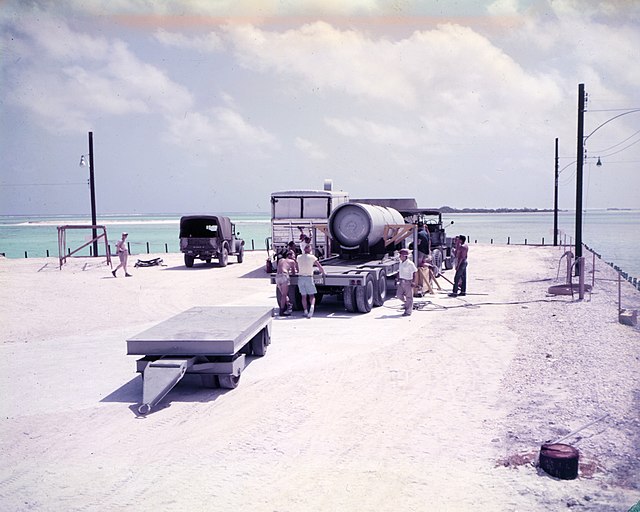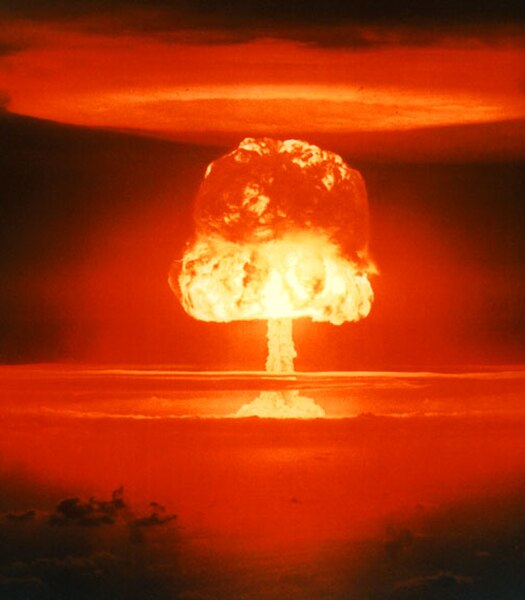Castle Bravo was the first in a series of high-yield thermonuclear weapon design tests conducted by the United States at Bikini Atoll, Marshall Islands, as part of Operation Castle. Detonated on March 1, 1954, the device remains the most powerful nuclear device ever detonated by the United States and the first lithium deuteride-fueled thermonuclear weapon tested using the Teller-Ulam design. Castle Bravo's yield was 15 megatons of TNT [Mt] (63 PJ), 2.5 times the predicted 6 Mt (25 PJ), due to unforeseen additional reactions involving lithium-7, which led to radioactive contamination in the surrounding area.
The SHRIMP device in its shot cab
Shot-cab installation of SHRIMP device, with humans for scale
Bravo SHRIMP device shot-cab
SHRIMP device delivered via truck awaiting installation
A thermonuclear weapon, fusion weapon or hydrogen bomb (H bomb) is a second-generation nuclear weapon design. Its greater sophistication affords it vastly greater destructive power than first-generation nuclear bombs, a more compact size, a lower mass, or a combination of these benefits. Characteristics of nuclear fusion reactions make possible the use of non-fissile depleted uranium as the weapon's main fuel, thus allowing more efficient use of scarce fissile material such as uranium-235 or plutonium-239. The first full-scale thermonuclear test was carried out by the United States in 1952 and the concept has since been employed by most of the world's nuclear powers in the design of their weapons.
Edward Teller in 1958
Operation Castle thermonuclear test, Castle Romeo shot
Operation Grapple on Christmas Island was the first British hydrogen bomb test.
One of France's Triomphant-class nuclear-armed submarines, Le Téméraire (S617)








